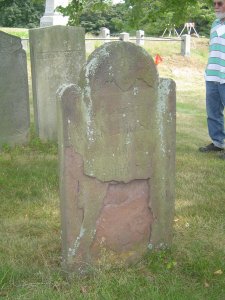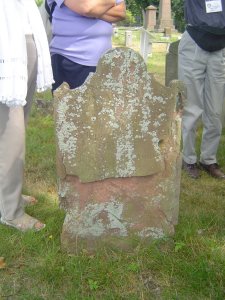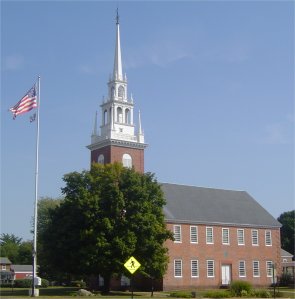 |
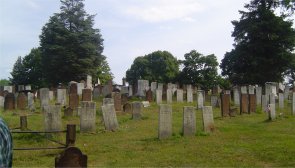 |
| Reunion attedees were treated to a guided walking tour of the Old Wethersfield Burying Ground located immediately behind the Meeting House (at left).
The tour guides explained that some of the earliest American artwork can actually be found in the brownstone carvings of colonial period grave stones.
|
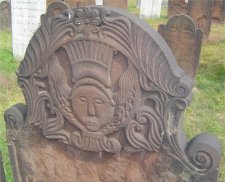 The craftmen who carved the stones took a great deal of pride in their work.
Often their work could be easily identified by certain characteristics that were common to all the stones they carved.
The craftmen who carved the stones took a great deal of pride in their work.
Often their work could be easily identified by certain characteristics that were common to all the stones they carved.
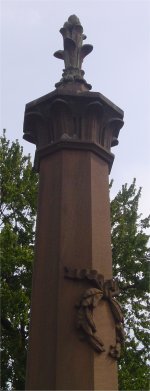 The brownstone markers are among the oldest in the burying ground.
In later years gravestones were crafted from schist, slate, granite and marble.
The artwork also changes through the years.
During the 1800's Victorian culture and art become prominent in America.
In the burying ground that is reflected by carvings of urns, flowering ferns, willows, etc.
The burying ground also features a variety of styles of grave markers.
There are the simple headstone, tabletops, and monuments.
They were essentially symbols of status.
The brownstone markers are among the oldest in the burying ground.
In later years gravestones were crafted from schist, slate, granite and marble.
The artwork also changes through the years.
During the 1800's Victorian culture and art become prominent in America.
In the burying ground that is reflected by carvings of urns, flowering ferns, willows, etc.
The burying ground also features a variety of styles of grave markers.
There are the simple headstone, tabletops, and monuments.
They were essentially symbols of status.
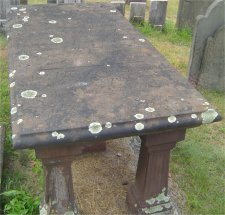 The obelisk monuments began appearing in the 1800's.
The Greek wreaths carved into them indicated victory of the soul over death, and the blooming flower at the top shows the goodness of the man's life.
Also, different sections of the family are represented on different sides of the monument.
The obelisk monuments began appearing in the 1800's.
The Greek wreaths carved into them indicated victory of the soul over death, and the blooming flower at the top shows the goodness of the man's life.
Also, different sections of the family are represented on different sides of the monument.
|


